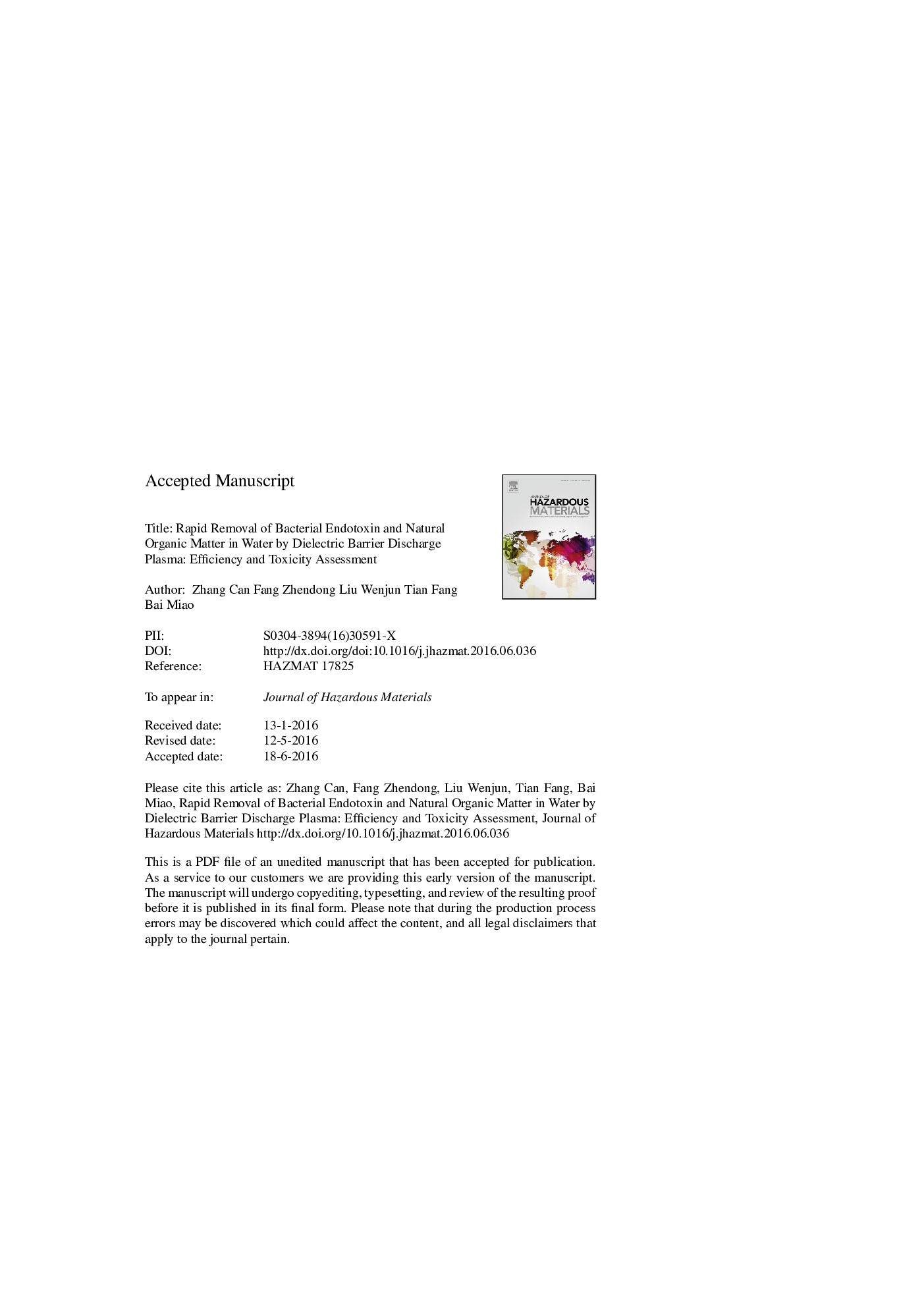| Article ID | Journal | Published Year | Pages | File Type |
|---|---|---|---|---|
| 6969824 | Journal of Hazardous Materials | 2016 | 36 Pages |
Abstract
Low-temperature plasma was used to control bacteria, endotoxins and natural organic matter (NOM) in water by a dielectric barrier discharge (DBD) device. Results indicate that DBD plasma has an obvious inactivation effect on various bacteria in water. The degree of inactivation from difficult to easy is as follows: Bacillus subtilis > Escherichia coli > Staphylococcus aureus. Activated ultrapure water treated using DBD plasma exhibited a sustained sterilization effect, but this sterilization effect decreased gradually after 1 h. The total-endotoxin (free-endotoxin and bound-endotoxin) released by Escherichia coli during inactivation, as well as artificially simulated endotoxin in a control solution, was significantly controlled by DBD plasma. Both the metabolites that appeared after inactivation of microorganisms by plasma treatment, and the NOM in filtration effluent of a water treatment plant were well removed by DBD plasma if the treatment duration was sufficiently long. However, the acute toxicity increased significantly, and persisted for at least 2 h, indicating that some long-life active substances were generated during the DBD process. Therefore, the removal of bacteria, endotoxins or NOM does not mean a safe water is produced. It is also important to eliminate the toxicity and byproducts produced during water treatment for the continuous promotion and industrial application of DBD plasma.
Keywords
Related Topics
Physical Sciences and Engineering
Chemical Engineering
Chemical Health and Safety
Authors
Can Zhang, Zhendong Fang, Wenjun Liu, Fang Tian, Miao Bai,
